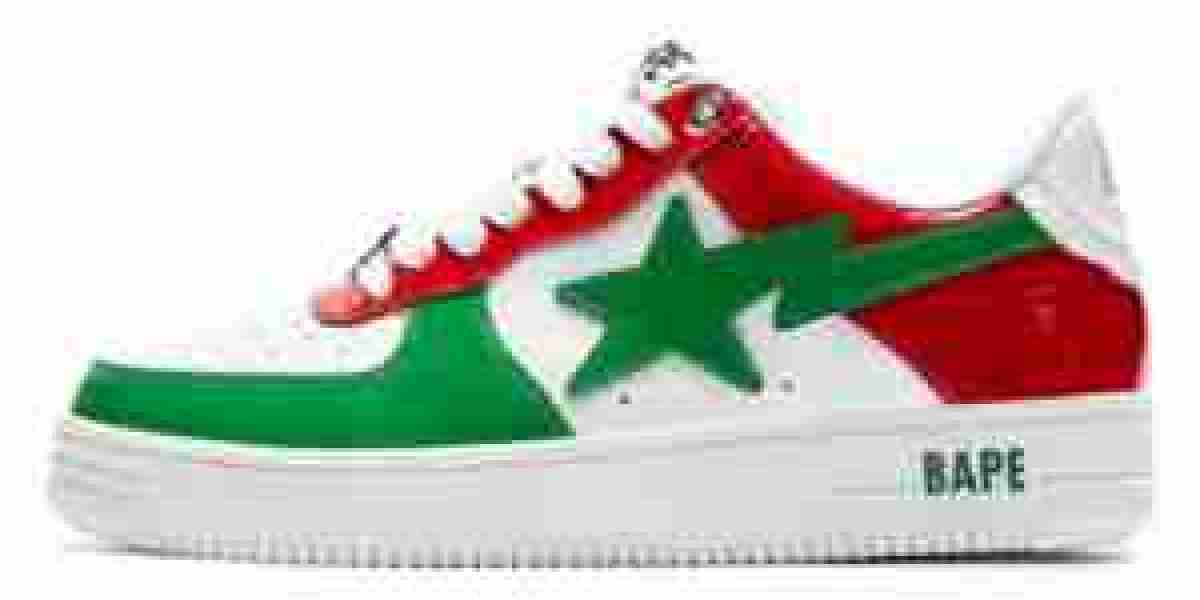In the ever-evolving world of streetwear, few sneakers have managed to carve out a legacy as unique and powerful as the BAPESTA. Launched by the Japanese fashion powerhouse A Bathing Ape (BAPE), BAPESTA is more than just a sneaker—it’s a cultural icon. Recognized for its loud aesthetics, star-shaped logo, and uncanny resemblance to Nike’s Air Force 1, the BAPESTA has become a symbol of status, rebellion, and individuality across continents. From Tokyo to New York, it has influenced fashionistas, artists, and celebrities alike.
Origins of the BAPESTA Legacy
BAPESTA first hit the market in the early 2000s as part of the A Bathing Ape line, which was founded in 1993 by Nigo. As a streetwear visionary, Nigo built BAPE on limited releases, exclusivity, and bold design—a formula that naturally fed into the hype culture of sneakers. Taking inspiration from American hip-hop, pop art, and urban life, the BAPESTA was designed to stand out in a crowd. Its unique design caught the attention of streetwear lovers worldwide and quickly became one of the most coveted sneakers of the decade.
Design Elements That Set BAPESTA Apart
One cannot talk about the BAPESTA without addressing its visual identity. From afar, it shares similarities with the Air Force 1, but a closer look reveals the unique DNA of the shoe. The most recognizable feature is the “STA” star shooting across the sides, replacing Nike’s Swoosh. The colorways are often experimental, featuring patent leather finishes, camo prints, and mismatched panels that align perfectly with BAPE’s ethos of bold expression. The thick midsole, BAPE branding on the tongue and heel, and the glossy upper all contribute to its unmistakable character.
Celebrity Endorsement and Cultural Relevance
A major reason behind BAPESTA’s success lies in its embrace by celebrities and artists. Pharrell Williams, Kanye West, Soulja Boy, and Lil Wayne were among the early adopters who catapulted the shoe into the limelight. Their appearances in music videos, concerts, and red carpets wearing BAPESTAs added immense cultural capital to the shoe. When Kanye West released a special edition BAPESTA featuring his famous “Dropout Bear” design, it broke the internet and confirmed the shoe’s influence in both the fashion and music industries.
Streetwear Evolution and the BAPESTA Revival
While the BAPESTA saw a dip in popularity in the late 2010s, the resurgence of Y2K fashion and the rebirth of nostalgic styles brought it back into the spotlight. BAPE reintroduced the sneaker with updated materials and collaborations, which reignited interest among both new-gen sneakerheads and longtime fans. Collaborations with brands like Undefeated and artists like Kid Cudi created limited-edition drops that sold out within minutes, proving that the BAPESTA was far from a relic—it was a timeless icon making a modern return.
The Art of Exclusivity and Hype
What makes BAPESTA such a powerful force in sneaker culture is its mastery of exclusivity. A Bathing Ape has always maintained a strategy of scarcity, releasing limited pairs, region-specific drops, and collaboration-only designs. This exclusivity, combined with high-quality design and celebrity association, fuels hype like no other. Sneaker collectors often treat BAPESTAs as investment pieces, with resale values frequently exceeding retail prices by large margins.
Cultural Significance Beyond Fashion
Beyond its status as a sneaker, BAPESTA represents the intersection of fashion, music, art, and identity. It symbolizes a generation that values uniqueness and self-expression over conformity. For many young people, owning a pair of BAPESTAs is not just about fashion—it’s about belonging to a culture that celebrates rebellion, creativity, and innovation. Its influence can be seen in the rise of limited-edition merchandise, pop culture collaborations, and even the rise of boutique streetwear brands that model themselves after BAPE’s success.
The Global Reach of a Japanese Streetwear Giant
Although BAPE originated in Japan, its reach has always been global. With flagship stores in Tokyo, Hong Kong, London, and Los Angeles, the brand made strategic moves to internationalize its appeal. The BAPESTA, in particular, was instrumental in introducing Western consumers to Japanese streetwear. Today, it's not uncommon to see sneaker enthusiasts from Paris to Seoul flaunting their customized or rare BAPESTA editions. This global presence is a testament to the shoe’s universal appeal and the clever branding behind it.
Modern-Day Relevance and Future Trajectory
As streetwear continues to evolve, the role of legacy sneakers like BAPESTA becomes even more critical. They serve as reference points for modern designers and storytellers. In a world flooded with countless sneaker releases each year, the BAPESTA manages to retain its unique position by staying true to its roots while adapting to new trends. Whether through sustainable materials, gender-inclusive designs, or digital fashion integrations in the metaverse, BAPESTA is poised to remain relevant for years to come.
Conclusion: The Timeless Appeal of BAPESTA
BAPESTA is not just a sneaker—it’s a symbol of individuality, creativity, and cultural fusion. Born in the heart of Tokyo and raised in the global streets, it continues to shape what streetwear means today. Its star-studded legacy, both literally and figuratively, shines across generations and subcultures. Whether you're a sneaker collector, a fashion enthusiast, or someone stepping into the streetwear scene for the first time, the BAPESTA offers more than just style—it offers a piece of fashion history. As long as there’s a desire for authenticity and expression, the BAPESTA will always have a place on the streets, in wardrobes, and in the hearts of sneaker lovers around the world.




